Football Stadium Safety: Some Implicit Features

Installation example at CSKA stadium
Italian and English football fans were considered the most aggressive. But now they are not buzzing at home. Why? Because they are deprived of the right to visit stadiums for life. Therefore, they buzz on the euro, at the World Cup, in France. This also begins with us: particularly emotional fans can easily catch a ban on visiting the arena for a sufficiently long period of time.
To begin with, if you are having a nonsmoker, then the stadium’s security staff will carefully enter your biometric data into the video surveillance system in accordance with a legal court decision. The next time you appear in the stadium, they will confidently recognize you and inform the security officers about this. The issue of personal data and freedom of agreement (a ticket is an agreement) is solved elegantly: at the “smoked” stage, they simply sue you and receive an opinion with which you can proceed further.
In general, there are two myths about stadium safety:
- That video surveillance does not help in crime prevention.
- And that biodetectors are the last century.
Command Center
To begin with, it's worth talking about what modern video surveillance is. If earlier it was an analog TV with a security guard and tape recording, now it is a situation center that coordinates the work of various services, a lot of pattern recognition (automatic detectors for video stream events), archive search, statistics, and generally a lot of IT.
In the situation center of the stadium there are usually about 10 operators and representatives of the services - fire, physical security and a police representative. Operators sit at the screens of their computers (each has virtual “quadrants”) and, if necessary, display a specific situation on a large video wall that requires a response. For example, if a fan sets fire to something on the podium, the fire recognition alarm is triggered first, the operator sees it, makes sure that it is not a false positive operation, and almost immediately, after a couple of seconds, displays this hero on the screen with the coordinates of the sector.
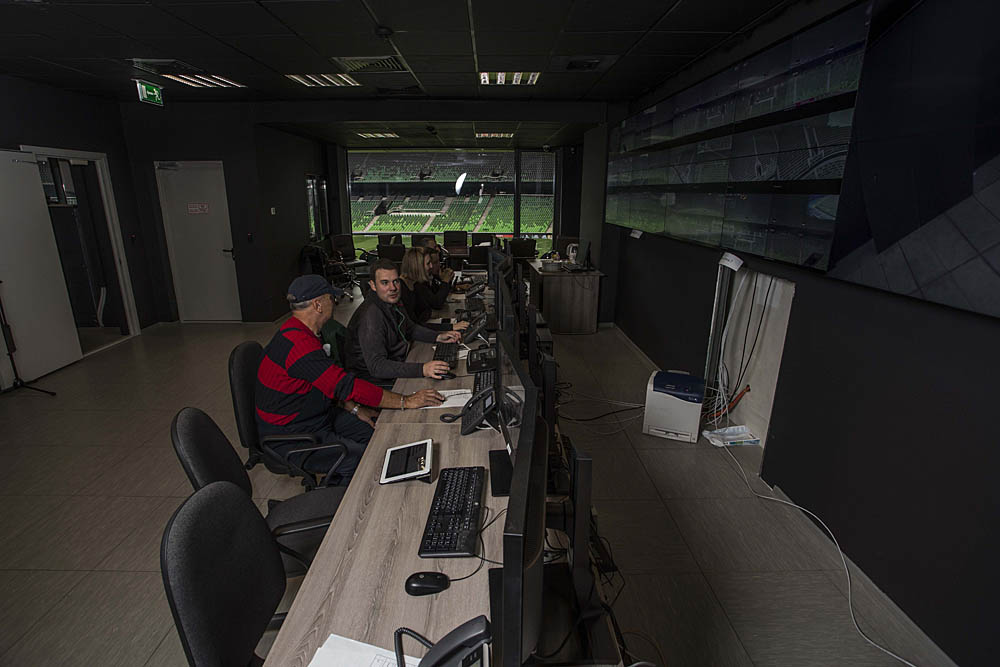
This is how this place looks in Krasnodar (commissioning).
A security officer takes a walkie-talkie and commands what to do, watching the development of a reality show.
The only moment - there are stadiums where the installation is on non-critical violations do not climb and do not provoke fan groups. It’s another matter that they will later file a lawsuit against the violators - just as silently, and you can find out about this only by subpoena, if suddenly the police do not decide to detain them without delay.
What allows you to automate video surveillance?
There are usually about a thousand cameras in the area of responsibility - you will not always run your eyes. Therefore, we need auto-detectors - albeit not the most accurate ones, but that make it possible to focus on 10-15 cameras, rather than a hundred for one operator. For long shifts, the incidence rate is calculated - 10-15 incidents per person per hour, otherwise he starts to react poorly and makes mistakes. More often - gets tired, less often - falls asleep. For example, at the CSKA stadium, the stands themselves, technical rooms, parking, a hall and hotel corridors are immediately monitored. There we installed 540 surveillance cameras. And in Krasnodar, we installed 1,000 security cameras (this is the stadium and the surrounding area), 9,000 fire detectors, 3,000 voice annunciators, and 600 security and alarm sensors.
The main objective of video surveillance is prosecution and “debriefing”. That is, it is believed that it does not help in the prevention of crime. Of course, it helps: if there is someone who real-time monitors the situation and can coordinate the physical security service, this is better than if there is no such supervision. In fact, we have several commonly used detectors based on pattern and situation recognition:
- The intersection of lines is an alarm that someone is in the wrong zone. It is often used in data centers and hazardous industries to save on insurance, but it also performs well in stadiums.
- Detecting abandoned and forgotten things . If you leave a package or a suitcase, the system will sound an alarm. It is actively used in almost all stations and airports, in stadiums - to a lesser extent.
- Search and accounting - sorting frames by orientation (“red jacket”, “with a dog”, “low”, “long hair” and so on) - if a suspect with an orientation runs around the object, we can quickly find it even in the crowd . But much more often these detectors are used to search for frames in the archive or to count how many times an employee with a dog passed this camera, for example.
- Fight detectors - these are still very inaccurate and poorly functioning: in beta tests we could hardly distinguish between friendly hugs, zombie apocalypse like in the metro at rush hour and kisses of couples in love from normal fights. Almost not used, but as the development of neural networks - it will, probably.
In general, almost no detectors are used offline. All of them help to draw the attention of the operator to something, but at the same time, the operator himself performs his work as usual. In recent years, everything has gone to the point that the role of the operator will fall: the quality of the detectors is growing, and most likely, automation will soon be able to distinguish most of the dangerous situations without a person.
The cameras are located both in the adjacent territory and at the checkpoint, in the stands and in the tribune area. The stands and the PPC are viewed in the highest quality, sufficient for face recognition in the crowd. Need more than 250 pixels in width for reliable identification on the "black list".
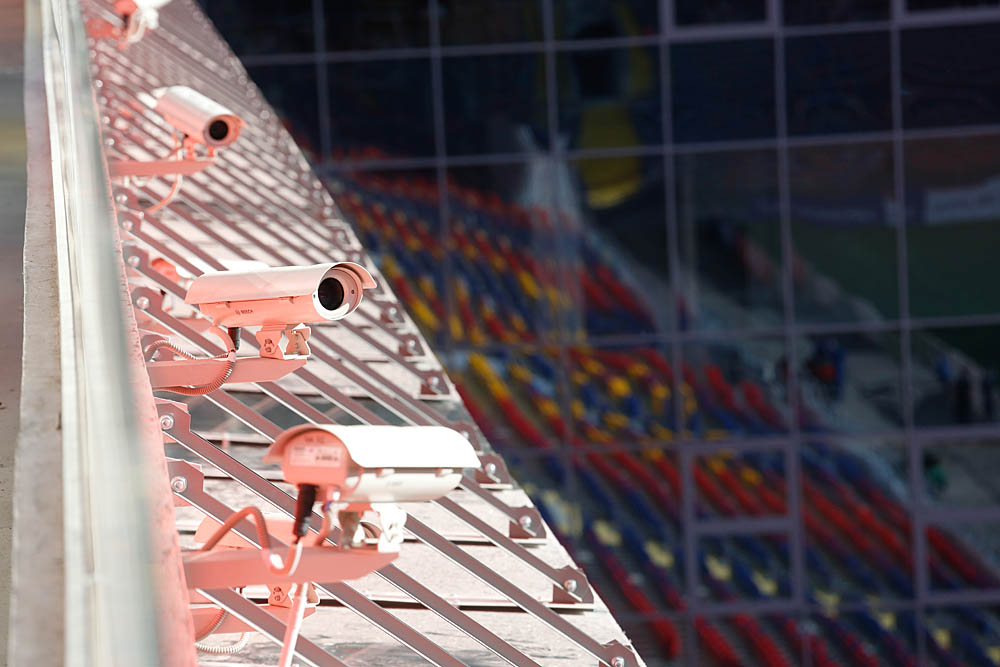
Cameras in the stands of CSKA stadium
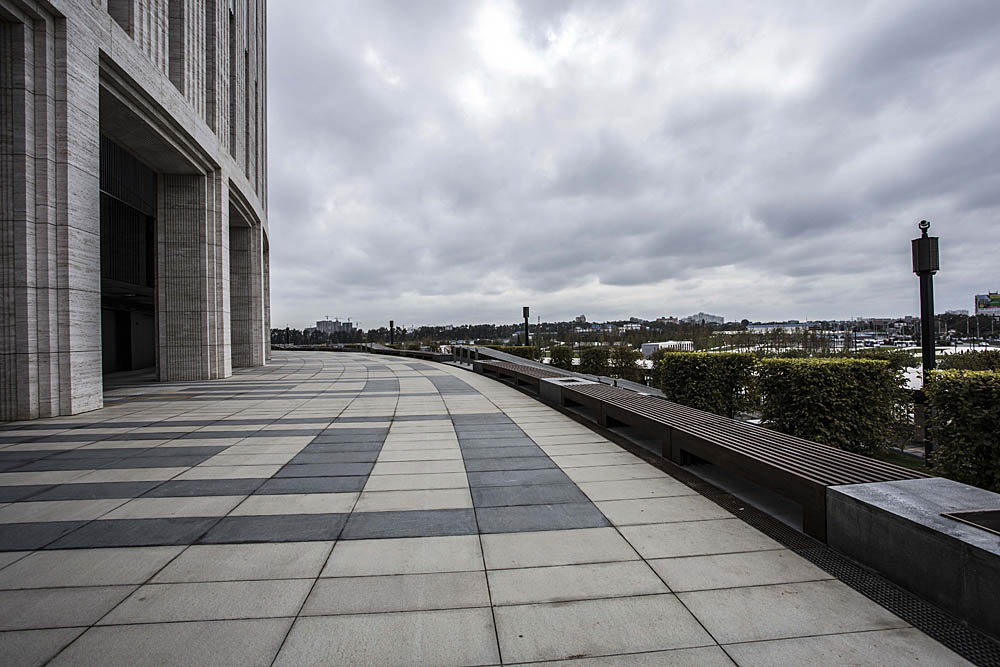
An example of the placement of outdoor cameras in a stadium in Krasnodar
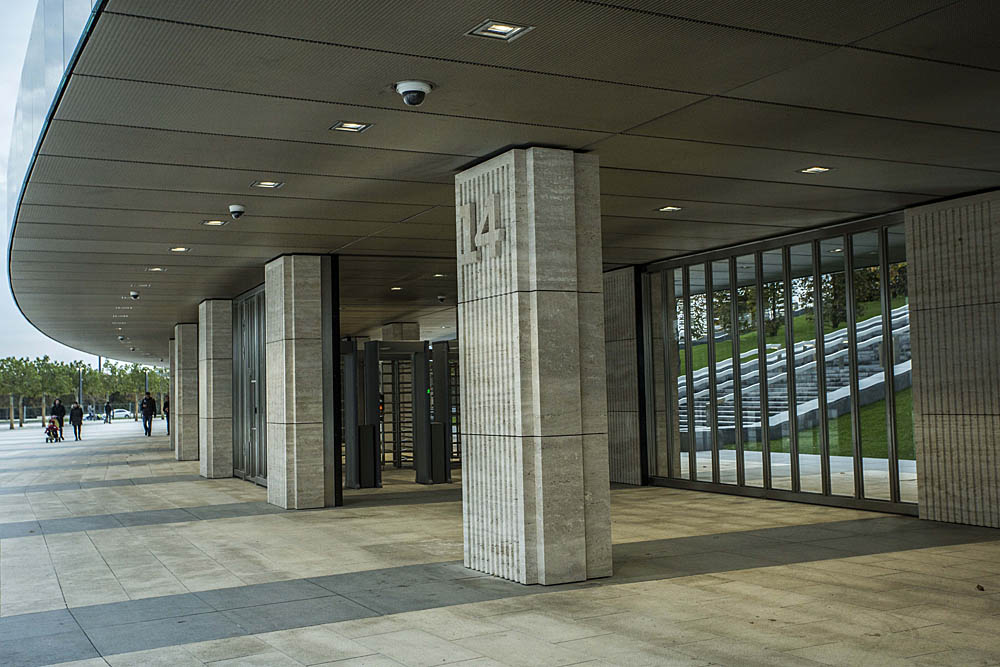
In Krasnodar
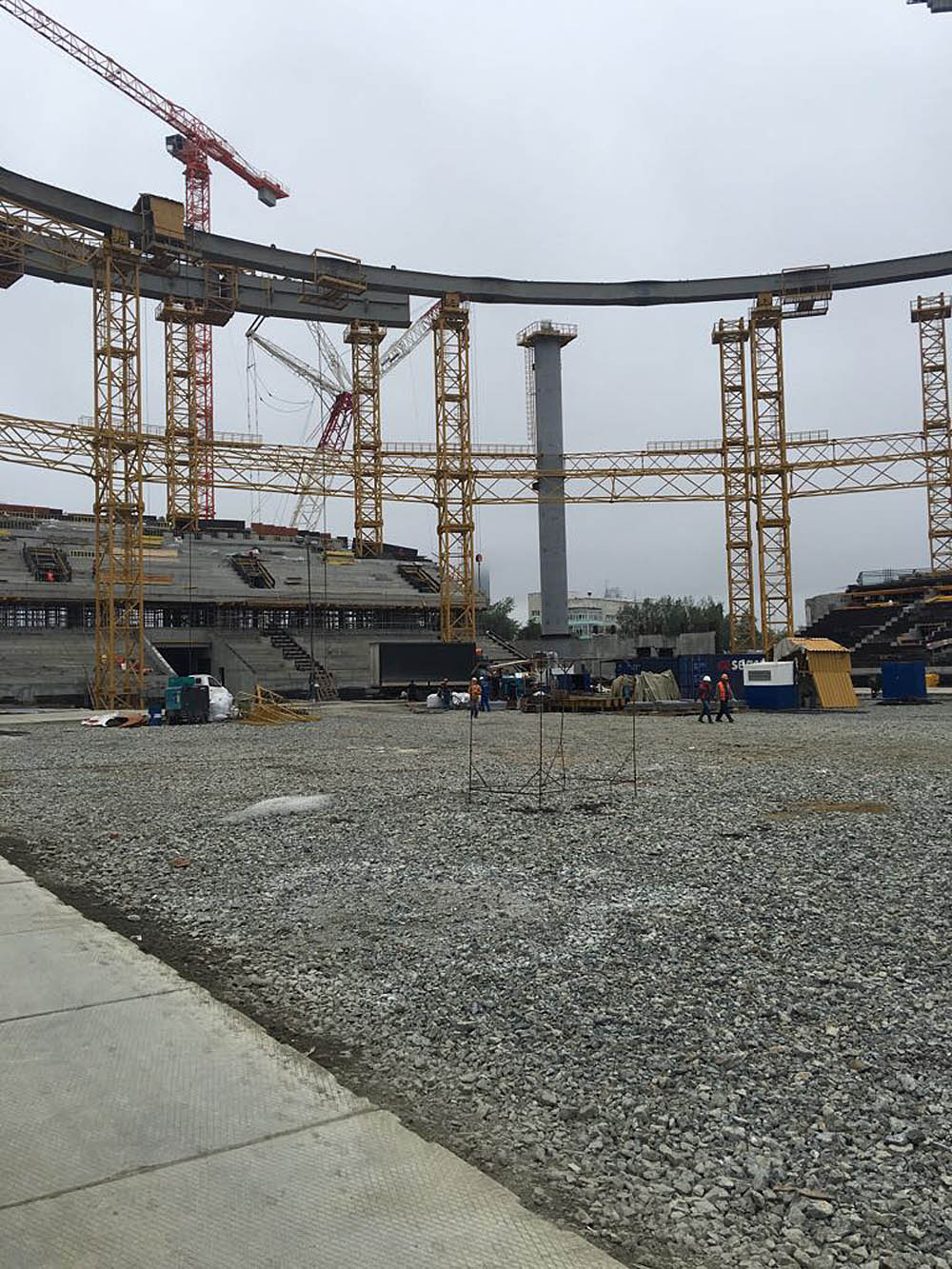
Here you can see the farms where the cameras will later be placed.
That is, it is almost useless to go through other people's documents (fan passport or fan ID) - in stadiums where there is a search by faces, this will not help.
What's on the perimeter?
Now about biodetectors. But to get to them, you need to talk about perimeter security. It:
- Fences with protection from crossing (from a microphone cord in the ground to various smart sensors at the top).
- Barriers of warning and stopping action, bollards.
- X-ray television installations (introscopes).
- Arched and hand-held metal detectors.
- Detectors of explosive and ionizing substances (like at the airport).
Explosive detectors are used individually during passage through the perimeter. Still for mass control biodetectors are often used. The most common and easy to use are specially trained service dogs.
The dog can work in shifts of 2 hours in a quiet mode, but the recommendation is to move from exit to exit every 15 minutes. Therefore, they come, sniff the crowd and, if not worried, move on. Due to their versatility, they will be used for a long time, as it seems to me.
According to FIFA regulations, 100% of fans need to be launched in an hour. This is from 45 thousand viewers. All bags at the entrance pass through an introscope, detectors of explosive and narcotic substances. But streamers, flags, sport attributes - this is registered in advance and already carried with the documentation. As a private person, it’s not possible to bring much — you need to go through a fan club, and there’s responsibility, as in musketeers: “all for one”.
For example, at one of the stadiums in Yekaterinburg we made 16 low-current systems, including television broadcasting, satellite reception, sound reinforcement, monitoring the deformation states of load-bearing structures, and systems for countering terrorist attacks. 127 km of cable were used, 48 introscopes were installed, 174 metal detectors - this is enough to pass all within the framework of the standard.
The fan passport contains a passive type RFID tag. It is read by the ticket-entry system at the entrance and portals at the exit of the stadium. This is necessary not only for recognizing fans, but also in order to understand how much has gone, how much has come out, and how much has remained under the podium. If suddenly a fire - at the same time to understand where and how many fans, whom to save.
More features
The situation center is duplicated by standard. If something happens to the main room, you can walk with legs 30-50 meters and get into the backup, and from there, almost without a break, continue operational management.
Now the operators have camera control - they can twist them, zoom in. The interfaces are now more convenient - they began to do with screens and touchpads instead of physical “mixing consoles”. In the future, it is planned to connect the operator via ethernet to video surveillance, and not necessarily directly from the stadium, but this is the future.
Cameras can send data directly to the Safe City system. This means that if you have had enough nonsense, you will be taken home, passing from camera to camera.
